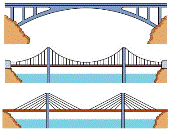Civil and Environmental Engineering, Department of

Department of Civil and Environmental Engineering: Faculty Publications
Document Type
Article
Date of this Version
Spring 5-16-2024
Citation
Yoder, C.J. and Lane, K. (2024). Investigating small drinking water system technical capacity to treat for PFAS. [White paper] University of Nebraska-Lincoln.
Abstract
Per- and polyfluoroalkyl substances (PFAS) presents technical challenges in small systems where advanced drinking water treatment implementation is difficult. Publicly available data were used to examine technical treatment capacity for PFAS in the US, using Nebraska as a pilot. Of 1312 PWSs in Nebraska, 441 have technologies capable of removing PFAS from drinking water. Reverse osmosis was the most common treatment technology in Nebraska with 277 total systems using this technology with, 194 PWSs with RO serving populations of <= 100 people. Fifty-two PWSs had granular activated carbon, 47 had ion exchange and 62 had ultraviolet, with UV being primarily used for disinfection. We found PWSs had different technology deployment methods, several systems had “significant deficiencies” reported in management and operation evaluations, and age and previous water quality violations were not correlated to treatment evaluations. The developed methodology models utilizing publicly available data for contaminants across the US.


Comments
This research was conducted as part of the NSF REU Program in Summer 2023 at the University of Nebraska-Lincoln and served as a proof of concept for future research.